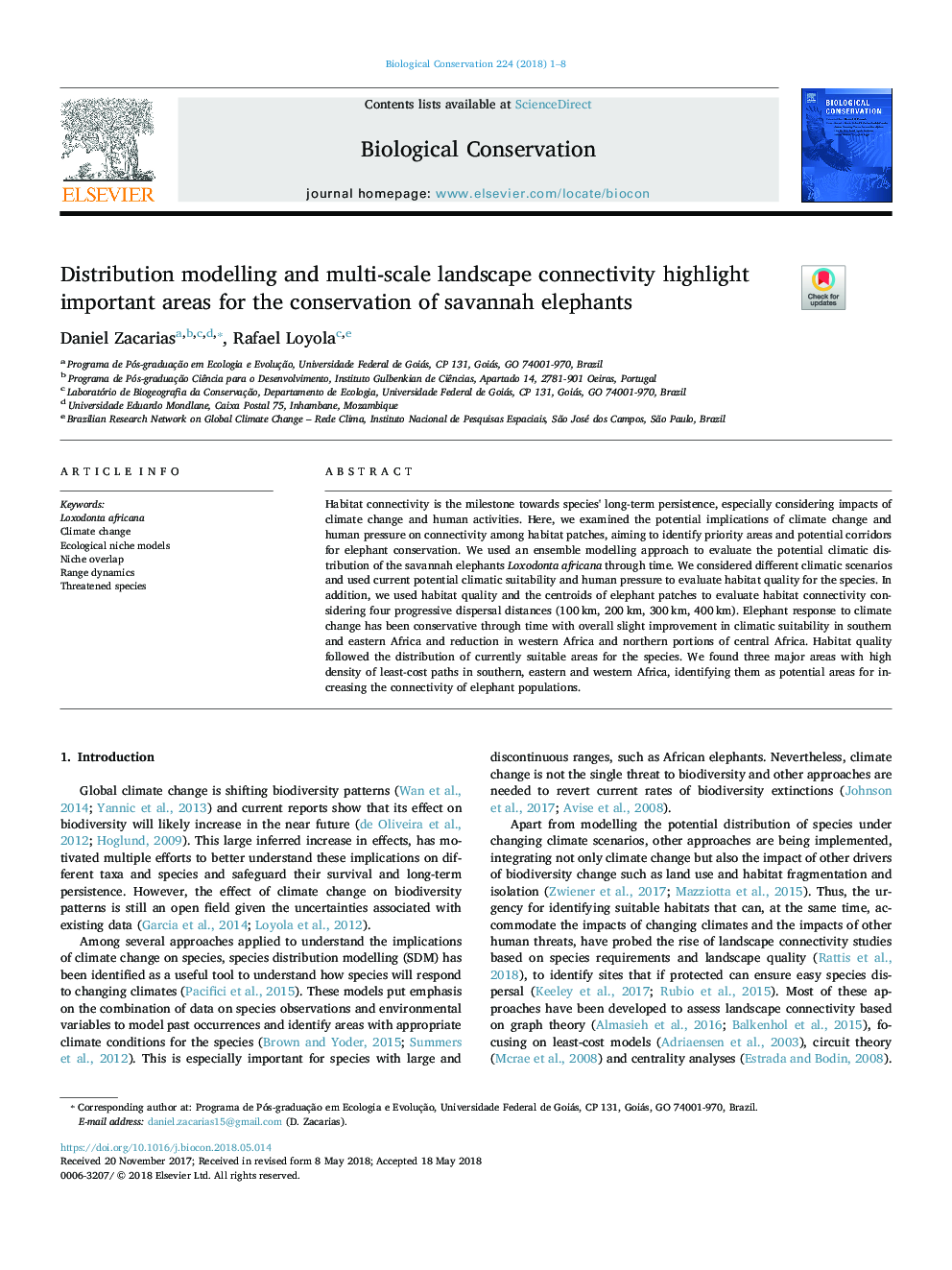| Article ID | Journal | Published Year | Pages | File Type |
|---|---|---|---|---|
| 8847174 | Biological Conservation | 2018 | 8 Pages |
Abstract
Habitat connectivity is the milestone towards species' long-term persistence, especially considering impacts of climate change and human activities. Here, we examined the potential implications of climate change and human pressure on connectivity among habitat patches, aiming to identify priority areas and potential corridors for elephant conservation. We used an ensemble modelling approach to evaluate the potential climatic distribution of the savannah elephants Loxodonta africana through time. We considered different climatic scenarios and used current potential climatic suitability and human pressure to evaluate habitat quality for the species. In addition, we used habitat quality and the centroids of elephant patches to evaluate habitat connectivity considering four progressive dispersal distances (100â¯km, 200â¯km, 300â¯km, 400â¯km). Elephant response to climate change has been conservative through time with overall slight improvement in climatic suitability in southern and eastern Africa and reduction in western Africa and northern portions of central Africa. Habitat quality followed the distribution of currently suitable areas for the species. We found three major areas with high density of least-cost paths in southern, eastern and western Africa, identifying them as potential areas for increasing the connectivity of elephant populations.
Keywords
Related Topics
Life Sciences
Agricultural and Biological Sciences
Ecology, Evolution, Behavior and Systematics
Authors
Daniel Zacarias, Rafael Loyola,
